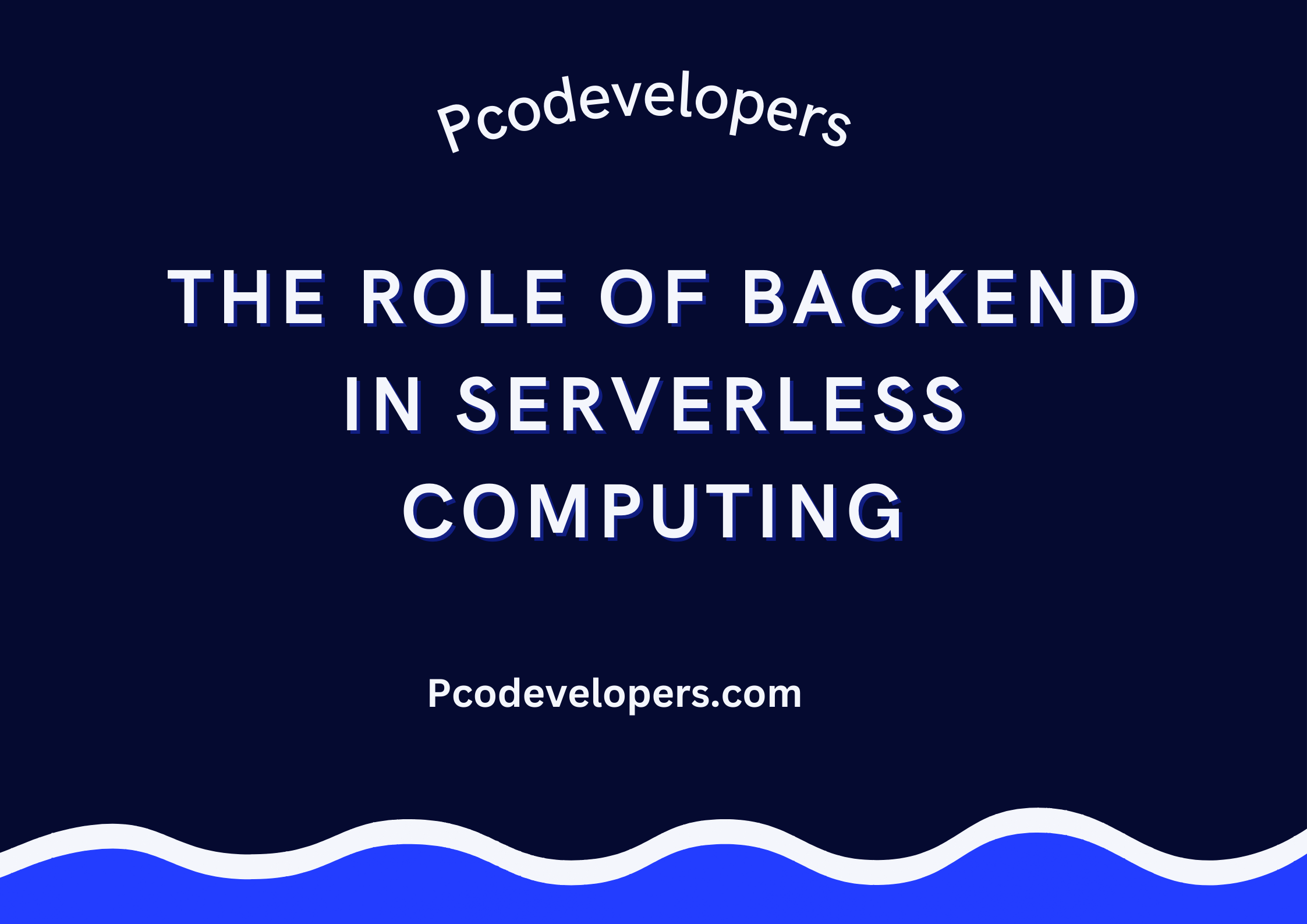Serverless computing is revolutionizing the way developers build and deploy applications. It offers a model where developers focus solely on writing code while the cloud provider manages the infrastructure. But even in a serverless architecture, the backend remains crucial. Let’s dive into the role of the backend in serverless computing and understand its importance in simple terms.
What is Serverless Computing?
Before we explore the backends' role, it's essential to understand what serverless computing is. In a traditional server-based model, developers need to manage the servers, scale them according to traffic, and handle maintenance tasks. Serverless computing abstracts these responsibilities. Developers write functions, and the cloud provider (like AWS, Azure, or Google Cloud) runs and scales these functions as needed.
The Backend in Traditional vs. Serverless Architectures
In a traditional architecture, the backend involves server setup, maintenance, database management, and handling business logic. In serverless computing, some of these responsibilities are shifted to the cloud provider, but the backend still plays a pivotal role:
1. Business Logic: This is the core of any application. In serverless computing, business logic is implemented as functions, often called "Functions as a Service" (FaaS). These functions are triggered by events, such as an HTTP request or a file upload.
2. Database Management: Even in a serverless model, applications need databases to store and retrieve data. Serverless architectures use managed databases (like AWS DynamoDB or Azure Cosmos DB), which scale automatically and reduce administrative overhead.
3. API Gateway: This component acts as a bridge between the frontend and backend. It routes requests to the appropriate serverless functions. An API Gateway can handle tasks like authentication, request validation, and rate limiting.
4. Authentication and Authorization: Security is crucial in any application. In a serverless setup, services like AWS Cognito or Firebase Authentication manage user authentication and authorization, ensuring that only authorized users can access certain parts of the application.
5. Event Handling: Serverless architectures rely heavily on events. These can be HTTP requests, changes in a database, file uploads, or scheduled tasks. The backend functions respond to these events, process the data, and execute the necessary logic.
6. Third-party Integrations: Modern applications often need to integrate with third-party services like payment gateways, email services, or external APIs. Serverless functions can easily call these services and handle the responses, keeping the application logic clean and modular.
1. Cost Efficiency: In serverless computing, you only pay for the compute time you use. This pay-as-you-go model can significantly reduce costs, especially for applications with variable or unpredictable traffic.
2. Scalability: Serverless architectures automatically scale with the demand. Whether your application has ten users or ten thousand, the cloud provider ensures that the necessary resources are available.
3. Reduced Operational Overhead: With the cloud provider managing the infrastructure, developers can focus on writing code and delivering features. There’s no need to worry about server maintenance, patching, or scaling.
4. Faster Time-to-Market: Serverless computing accelerates development cycles. Developers can quickly deploy functions, test them, and iterate based on feedback. This agility is crucial in today’s fast-paced tech landscape.
While serverless computing offers many benefits, it also comes with its own set of challenges:
1. Cold Starts: Serverless functions can experience a delay (cold start) when they are invoked after being idle. This can impact performance, especially for latency-sensitive applications.
2. Vendor Lock-In: Relying heavily on a single cloud provider's services can make it challenging to switch providers in the future. It’s essential to consider this when designing your architecture.
3. Complexity: While serverless abstracts infrastructure management, it can introduce complexity in other areas, such as debugging, monitoring, and managing distributed components.
Serverless computing is transforming how applications are built and deployed. Despite the shift in infrastructure management to cloud providers, the backend remains a critical component. It handles business logic, database interactions, security, and integrations, ensuring that applications run smoothly and efficiently. By understanding the role of the backend in serverless computing, developers can leverage this architecture to build scalable, cost-effective, and agile applications.
Popular Posts

10 JavaScript Concepts That Node.js Developers Must Know
by Admin pcode • Oct 14, 2024

Best Programming Languages to Learn Robotics in 2025
by Admin pcode • Oct 13, 2024

How I Use ChatGPT to Make a Lot of Money as a Self-Made Millionaire
by Admin pcode • Oct 12, 2024

Exploring Real-time Communication with WebSockets: A Practical Guide
by Admin pcode • Oct 11, 2024

Unlock Career Growth with Google’s 2025 BOLD Internship Program
by Admin pcode • Oct 11, 2024

iOS 18.1: All Apple Intelligence Features Revealed
by Admin pcode • Oct 11, 2024
